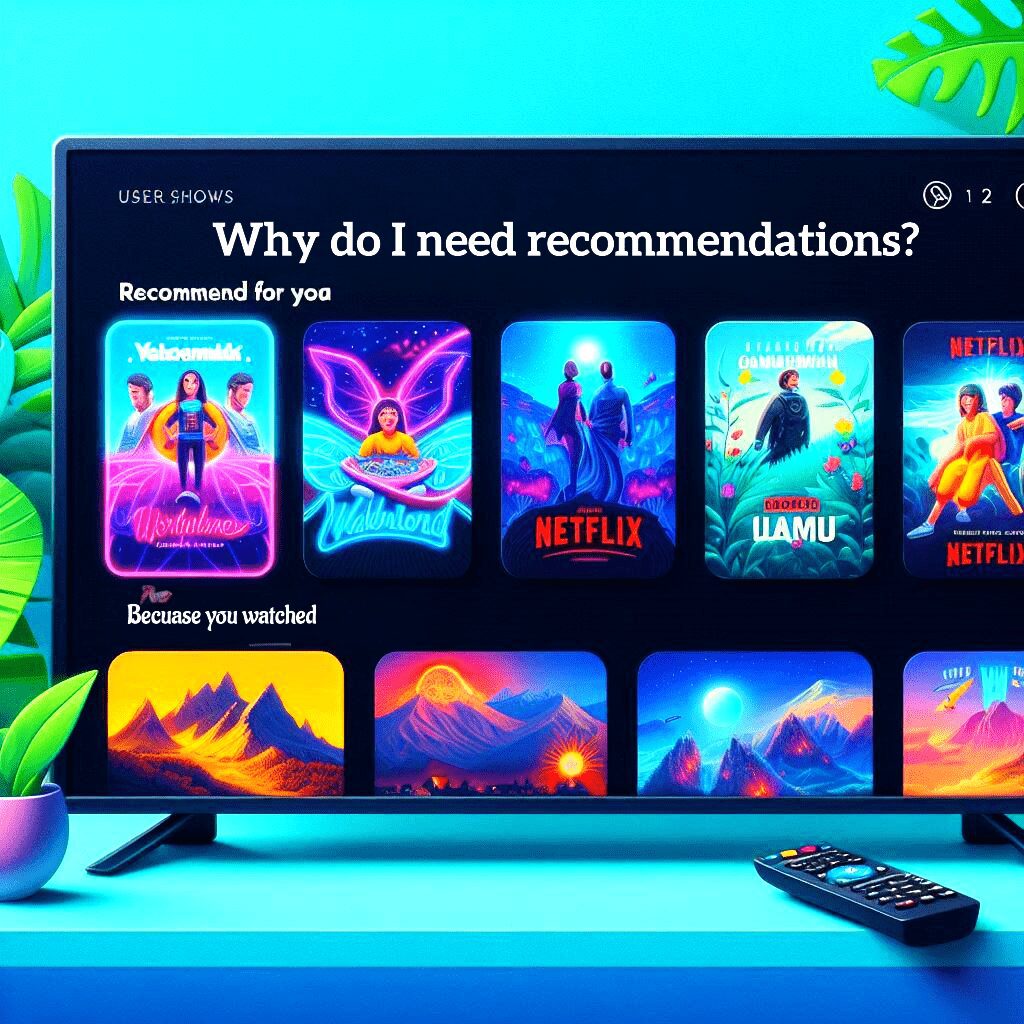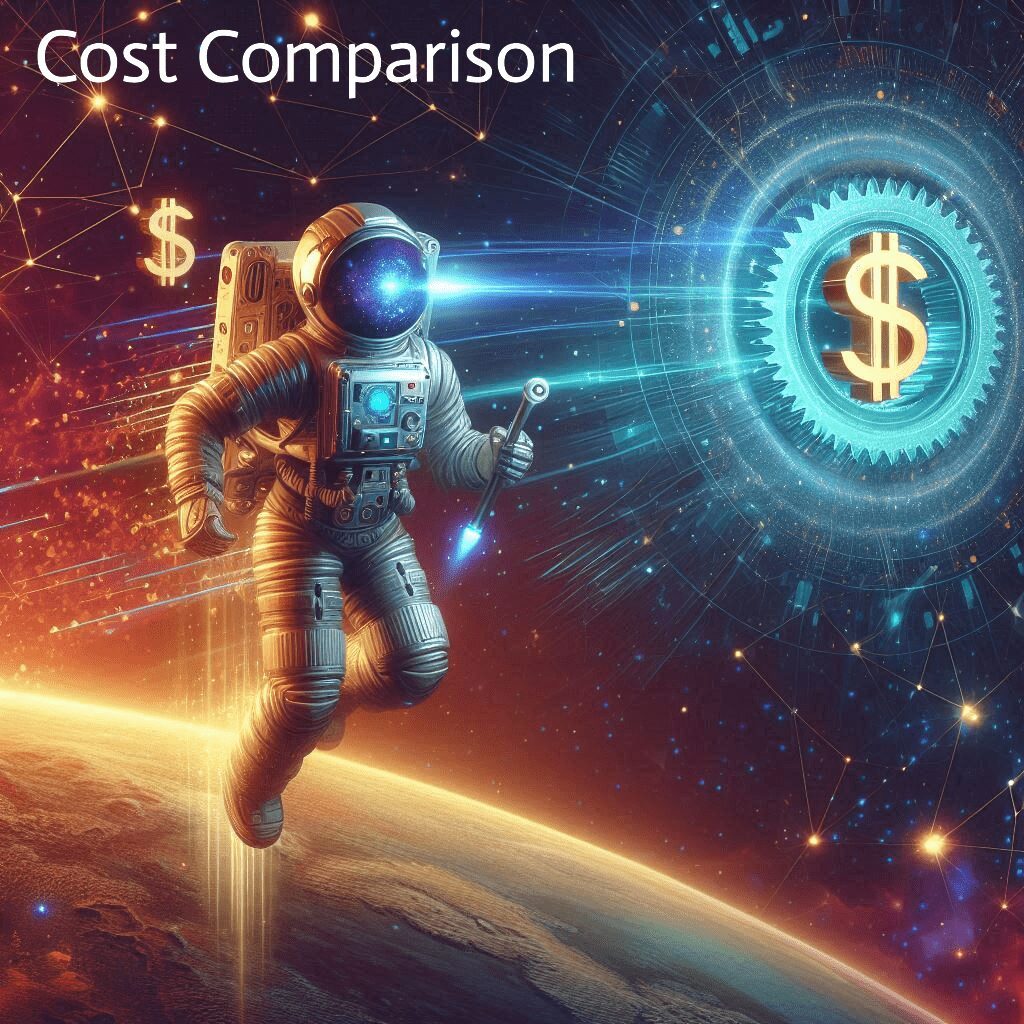Skyrocket Sales: The Ultimate Guide to Recommendation Engine

In today’s era of content overload, a recommendation engine has become the secret weapon for e-commerce, OTT (over-the-top), and other platforms that require recommendations for users. Imagine a virtual guide that effortlessly curates movies and shows based on your tastes, guiding you through a vast library and eliminating the dreaded “what to watch next?” dilemma. This is the magic of recommendation engines, and it’s not just about convenience. Recommendation engines are powerful tools that can significantly enhance user engagement, boost content discovery, and ultimately drive subscriber satisfaction and retention.
In this article, we’ll explain the exciting process of investigating and finalizing a recommendation engine for a booming OTT platform with the potential to serve over 10 million users. By implementing a well-designed system, we were able to personalize the user experience, ensuring viewers spend less time browsing and more time enjoying content they truly love. This not only translates to happier users but also fuels platform growth and user loyalty.
However, selecting the right recommendation engine wasn’t a walk in the park. During our research, we encountered several challenges, which is precisely why we are here to share our insights. This article will not only compare two prominent options – open-source Gorse and cloud-based AWS Personalize – but also shed light on the key factors we considered while navigating the world of OTT recommendation engines. So, buckle up and join us as we delve into the exciting world of recommendation engines and discover how they can elevate your e-commerce or OTT platform!
Why do we need a recommendation engine?

Did you know 70% of viewers abandon their OTT platform search within minutes because they can’t find anything to watch? Recommendations are key for OTT platforms! They personalize the user experience by suggesting shows and movies viewers will love, boosting engagement and satisfaction. This translates to increased watch time and potential subscription growth. From discovering hidden gems to streamlining endless scrolling, recommendations help users find the perfect content faster, reducing decision fatigue. In today’s competitive landscape, a smart recommendation engine can be the secret weapon your OTT platform needs to keep viewers glued to their screens.
The core challenge for our OTT platform was to create a recommendation engine that could deliver exceptional user experiences through the following functionalities:
- Top Trending Recommendations: Identify and showcase the most popular movies on the platform, catering to a broader audience and keeping users updated on the latest buzz.
- Contextual Recommendations during Playback: While a user is actively watching a movie, recommend similar content based on genre, actors, directors, or other relevant attributes. This keeps them engaged and helps them discover new favorites.
- Personalized Recommendations Based on Watch History: Analyze a user’s viewing habits to suggest movies they’re likely to enjoy. This personal touch fosters a deeper connection with the platform and encourages continued engagement.
Choosing Your Recommendation Engine: Deployment and Maintenance Strategies

As discussed earlier, a well-chosen recommendation engine can significantly enhance your OTT platform’s user experience. However, setting up and maintaining any recommendation engine comes with its own set of challenges. Here, we compare Gorse (open-source) and AWS Personalize (managed service) specifically in terms of deployment and ongoing maintenance.
Gorse: Being open-source, Gorse offers complete control over deployment and requires manual maintenance. You’ll need to set up and manage servers, ensuring software updates and security patches.There are three main deployment methods for Gorse on an OTT:
Binary Deployment (Single Node):
This method is ideal for small-scale deployments where you only need a single node. It involves downloading the standalonegorse-in-onebinary and running it directly on your server. This is a quick and easy approach for testing in low-traffic environments.Gorse-in-one on Docker (Single Node):
Similar to binary deployment, this method is suitable for single-node deployments. Here, you leverage the convenience of Docker containers. You pull thegorse-in-oneDocker image and run it within a container. This offers a more packaged and isolated environment compared to the raw binary approach.Kubernetes Deployment (Multiple Nodes):
For large-scale deployments with multiple nodes in a cluster, deploying Gorse on Kubernetes is the recommended approach. Kubernetes provides a robust platform for managing containerized applications like Gorse. It facilitates scaling, high availability, and efficient resource utilization. You can either leverage the Helm chart or manually deploy Gorse using YAML files, as we discussed earlier.
Choosing the right deployment method depends on your specific needs:
- For small-scale deployments or testing purposes, the binary or Docker container approach might suffice.
- For production environments with significant user traffic and potential for growth, deploying Kubernetes offers a more scalable and manageable solution. We want to support millions of users, so we used this option for our OTT platform.
AWS Personalize: A managed service, AWS Personalize handles deployment and maintenance. AWS takes care of infrastructure, scaling, and updates, freeing you to focus on core functionalities.AWS Personalize doesn’t require direct deployment like Gorse. Since it’s a managed service, provisioning and configuration happen within the AWS environment. Here’s a roadmap for deploying a recommendation engine with AWS Personalize:
- Setting Up Your AWS Account:
- Ensure you have an active AWS account with proper permissions for Personalize.
- Familiarize yourself with the AWS Management Console and consider using the AWS CLI or SDKs for automation.
- Data Preparation:
- Gather the user data (watch history, ratings, preferences) and item data (movie descriptions, genres, actors) for your OTT platform.
- Ensure your data adheres to the format expected by Personalize for efficient ingestion. Refer to the AWS documentation for data schema details
- Creating Datasets and Schemas:
- Within the AWS Personalize console or using the AWS CLI/SDKs, create datasets to store your user and item data.
- Define schemas to specify the structure and attributes of your data.
- Creating a Dataset Group:
- A Dataset Group combines your user and item datasets, enabling Personalize to establish relationships between them.
- Choosing a Recommendation Algorithm:
- AWS Personalize offers various recommendation algorithms like Matrix factorization or Collaborative filtering.
- Select the algorithm that best aligns with your use case and data characteristics.
- Creating a Solution:
- A solution represents a specific recommendation engine configuration. It references your dataset group, chosen algorithm, and desired recommendation types (e.g., top-N recommendations).
- Training the Solution:
- Initiate the training process for your solution. Personalize will analyze your data to build the recommendation model.
- Training time depends on the data volume and chosen algorithm.
- Campaign Creation (Optional):
- Campaigns allow you to manage and A/B test different recommendation configurations.
- You can create campaigns referencing your trained solutions and deploy them to your OTT platform.
- Integrating Recommendations:
- Once your solution is trained and potentially deployed through a campaign, integrate the Personalize API into your OTT platform’s code.
- The API allows you to request recommendations based on user IDs or item IDs, personalizing your user experience.
Unleash Scalability: How to Choose the Right Recommendation Engine?

In the ever-growing world of OTT platforms, scalability is paramount. As your user base explodes, your recommendation engine needs to seamlessly handle the increased traffic without compromising performance. Here’s a deep dive into how Gorse and AWS Personalize handle scalability:
Gorse: Gorse offers horizontal scalability, meaning you can increase its processing power by adding more nodes to your cluster. This allows Gorse to handle a growing user base and larger datasets associated with your OTT platform. Here’s a breakdown of its scalability potential:
Benefits of Horizontal Scaling:
- Increased Throughput: With additional nodes, Gorse can handle more recommendation requests simultaneously, improving response times for your OTT platform users.
- Improved Performance: Distributing workloads across multiple nodes reduces the processing burden on any single server, leading to smoother performance under heavy traffic.
- Scalability for Growth: As your OTT platform attracts more users and accumulates data, you can easily scale Gorse by adding nodes to meet the growing demand.
Limitations of Gorse Scalability:
- Management Overhead: Adding and managing multiple nodes requires additional configuration and ongoing maintenance compared to a single-node setup.
- Resource Optimization: Efficiently distributing workload across the cluster and ensuring optimal resource utilization becomes more complex with a larger number of nodes.
- Potential Complexity: While horizontal scaling offers benefits, it can introduce some complexity for smaller teams or those less familiar with distributed systems.
Scaling Considerations:
- Start Small: For initial deployments or low user traffic, a single-node setup might be sufficient.
- Scale as Needed: As your OTT platform grows and user traffic increases, consider adding more nodes to the Gorse cluster.
- Monitoring & Optimization: Continuously monitor your Gorse cluster’s performance and resource utilization to identify bottlenecks and optimize scaling strategies.
Overall, Gorse is a viable solution for many OTT platforms aiming to personalize user experiences. Its horizontal scalability allows it to grow alongside your platform, but for exceptionally high-traffic scenarios, managed services might offer a more scalable and hands-off approach.
AWS Personalize: One of the significant advantages of AWS Personalize is its managed service nature. Unlike open-source options like Gorse, which require manual scaling by adding server nodes, AWS Personalize takes care of scaling automatically
Automatic Scaling:
- Unlike Gorse, which requires manual cluster management, AWS Personalize is a managed service. AWS automatically scales the underlying infrastructure based on your usage patterns. This eliminates the burden of provisioning and managing servers.
Elasticity:
- AWS Personalize can instantly scale up or down to accommodate fluctuations in user traffic. This ensures consistent performance during peak usage periods and avoids overspending on resources during low traffic times.
Pay-as-You-Go Model:
- You only pay for the resources you use with AWS Personalize. This cost-effective approach is ideal for OTT platforms with variable user traffic patterns.
Benefits of High Scalability for OTT Platforms:
- Smooth User Experience: Even during surges in user activity, AWS Personalize can handle the increased recommendation requests without compromising response times or personalization accuracy.
- Accommodating Growth: As your OTT platform attracts more users, AWS Personalize automatically scales to meet the growing demand, ensuring a seamless user experience.
- Reduced Operational Overhead: The managed nature of AWS Personalize frees you from managing server infrastructure, allowing you to focus on core platform development and user experience optimization.
Scalability Considerations with AWS Personalize:
- Cost Management: While pay-as-you-go is beneficial, closely monitor your usage patterns and costs associated with AWS Personalize to avoid unexpected spikes.
- Latency Considerations: In rare cases, scaling operations might introduce a slight delay in recommendation generation. However, AWS generally optimizes for minimal latency.
Overall, AWS Personalize excels in scalability, making it a strong choice for OTT platforms of all sizes. Automatic scaling, elasticity, and the pay-as-you-go model ensure a cost-effective solution that adapts to your platform’s growth.
While Gorse offers decent scalability, it might not be the ideal choice for extremely large OTT platforms with massive user bases and data volumes. In such scenarios, consider managed recommendation engine services like AWS Personalize, which automatically scale to meet your needs without the need for manual cluster management.
Boost Engagement with Powerful Features: Choosing the Right Recommendation Engine

The right recommendation engine can significantly improve your OTT platform’s user experience by suggesting relevant content. But feature sets can vary widely. Let’s explore what Gorse and AWS Personalize offer:
Gorse: Gorse offers a core set of features that cater to recommendation engine functionalities, but might require additional integrations for more advanced needs. Here’s a breakdown of its key features:
Core Recommendation Algorithms:
- Collaborative Filtering: This popular technique recommends items similar to those enjoyed by users with similar taste profiles.
- Item Similarity: Gorse recommends items with attributes (e.g., genre, actors) similar to items a user has interacted with.
- Content-based Filtering: This method recommends items based on the content attributes of items a user has liked in the past.
Personalization Features:
- User Profiles: Gorse allows storing user data like watch history, ratings, and preferences to personalize recommendations.
- Real-time Recommendations: Gorse can generate recommendations based on user actions and current context.
Additional Features:
- A/B Testing (Limited): Gorse offers limited A/B testing capabilities for comparing recommendation strategies.
- Offline Training: Gorse supports training recommendation models on historical data before deploying them to production.
- RESTful API: Gorse provides a RESTful API for integrating recommendations into your OTT platform.
Limitations of Gorse’s Feature Set:
- Advanced Personalization Features: Gorse lacks some advanced features like Explainable AI (XAI) for interpreting recommendations or complex model architectures often found in managed services.
- Integrations for Advanced Needs: For functionalities like real-time filtering or hybrid recommendation approaches (combining collaborative filtering with content-based), you might need to integrate Gorse with external tools or libraries.
| Feature | Description |
| Collaborative Filtering | Recommends similar items based on user behavior. |
| Item Similarity | Recommends items with similar attributes to liked items. |
| Content-based Filtering | Recommends items based on item content. |
| User Profiles | Stores user data for personalization. |
| Real-time Recommendations | Generates recommendations based on user actions. |
| A/B Testing (Limited) | Compares recommendation strategies. |
| Offline Training | Trains models on historical data. |
| RESTful API | Integrates recommendations into your platform. |
| Advanced Personalization Features (Limited) | Lacks XAI or complex model architectures. |
| Integration Needs (For Advanced Features) | Might require external tools for real-time filtering or hybrid approaches. |
AWS Personalize: AWS Personalize boasts a comprehensive feature set designed to deliver robust and personalized recommendation experiences. Here’s a breakdown of its key functionalities:
Advanced Recommendation Algorithms:
- Multiple Algorithm Choices: AWS Personalize goes beyond basic collaborative filtering, offering options like Matrix Factorization, ALS (Alternating Least Squares), and User-Based and Item-Based collaborative filtering. You can choose the algorithm that best suits your data and use case.
- Hybrid Recommendations: Combine collaborative filtering with content-based filtering to leverage user behavior and item attributes for more comprehensive recommendations.
Personalization and User Experience:
- User-User Interactions: Go beyond simple item interactions and incorporate user-user interactions (e.g., follows) to refine recommendations based on social connections.
- Contextual Recommendations: Personalize recommendations based on real-time context, such as time of day, device used, or user location (if applicable).
- Explainable AI (XAI): Gain insights into why specific recommendations are generated, allowing for greater transparency and potentially improving user trust.
Advanced Features for Personalization Optimization:
- A/B Testing: Rigorously test different recommendation strategies and configurations to identify the options that deliver the best results for your OTT platform.
- Filtering and Ranking: Fine-tune recommendations by applying filters based on user preferences, item attributes, or business rules. You can also control the order in which recommendations are presented.
- Personalized Ranking: Personalize the order of recommendations based on individual user preferences, ensuring the most relevant items appear at the top.
Additional Features:
- Event Tracking: Integrate event tracking to capture user interactions beyond basic item views or ratings, allowing for more nuanced recommendations.
- Batch Recommendations: Generate recommendations for large user segments efficiently, ideal for bulk email campaigns or personalized notifications.
- Real-time Recommendations: Deliver personalized recommendations with minimal latency, which is crucial for an engaging user experience on your OTT platform.
Here’s a table summarizing the key features of AWS Personalize:
| Feature | Description |
|---|---|
| Advanced Recommendation Algorithms | Matrix Factorization, ALS, User/Item-Based Collaborative Filtering |
| Hybrid Recommendations | Combine Collaborative & Content-based Filtering |
| User-User Interactions | Leverage social connections for personalization |
| Contextual Recommendations | Personalize based on real-time context |
| Explainable AI (XAI) | Understand why recommendations are generated |
| A/B Testing | Optimize recommendation strategies |
| Filtering & Ranking | Fine-tune recommendations with filters and ranking |
| Personalized Ranking | Order recommendations based on user preferences |
| Event Tracking | Capture user interactions for nuanced recommendations |
| Batch Recommendations | Efficiently generate recommendations for large user groups |
| Real-time Recommendations | Deliver recommendations with low latency |
Here’s a head-to-head comparison of Gorse and AWS Personalize’s feature sets, highlighting their strengths and weaknesses for OTT platforms:
| Feature | Gorse | AWS Personalize |
|---|---|---|
| Core Recommendation Algorithms | Collaborative Filtering, Item Similarity, Content-Based Filtering | Collaborative Filtering (multiple variations), Matrix Factorization, ALS, Hybrid Recommendations |
| Personalization Features | User Profiles, Real-time Recommendations (limited) | User Profiles, Real-time Recommendations, User-User Interactions, Contextual Recommendations |
| Advanced Personalization | Limited A/B Testing, Offline Training | A/B Testing, Filtering & Ranking, Personalized Ranking, Explainable AI (XAI) |
| Integrations for Advanced Features | Might require external tools for real-time filtering or hybrid approaches | Built-in functionalities for advanced features |
| Management & Scalability | Manual cluster management, Horizontal Scaling | Managed service, Automatic Scaling, Pay-as-you-go model |
Maximize Value, Minimize Costs: Choosing the Right Recommendation Engine

Choosing the right recommendation engine for your OTT platform depends on your technical expertise and budget. Gorse, an open-source option, offers flexibility and customization but requires managing your own infrastructure (EKS cluster, RDS, Elasticache) and development effort (ETL pipeline, maintenance team). While free to use, the total cost of ownership (TCO) can add up. AWS Personalize, a managed service, is easier to set up with minimal development needed, but has pay-as-you-go costs based on data ingestion and recommendation calls. Analyze both theoretical and practical costs (like your experience with Gorse’s infrastructure management) to pick the engine that best aligns with your resources and budget.
Gorse: Being open-source, Gorse itself is free to use. However, you’ll incur costs for server infrastructure, maintenance, and potentially additional software licenses for desired functionalities.Estimating the exact cost of running Gorse for your scenario is difficult due to its reliance on underlying infrastructure. However, we can analyze the potential cost factors and strategies for keeping it cost-effective for a platform with 1 million users:
Cost Factors for Gorse:
- Server Instance: As an open-source tool, Gorse itself has no licensing cost. The primary expense comes from the server instance you choose to deploy it on. The cost will depend on:
- Server Specifications (CPU, RAM, Storage): These determine the server’s capacity to handle user traffic and recommendation requests. With 1 million users and 35,000 calls per hour, you’ll likely need a robust server instance.
- Cloud Provider Pricing: The hourly or monthly rate for server instances varies across cloud providers (e.g., AWS EC2, Google Cloud Compute Engine). Choose a provider with competitive pricing for your chosen server specifications.
- Database (Optional): While Gorse can work with its own built-in storage, for 1 million users, a dedicated database might be advisable. Consider:
- Managed Database Service: Services like AWS RDS or MongoDB Atlas offer ease of management and potential scalability benefits, but come with pay-as-you-go pricing.
- Self-Hosted Database: If you have the expertise, you could set up your own database server, but factor in hardware costs (purchase or maintenance) and electricity consumption.
Cost Optimization Strategies:
- Right-size your server: Choosing a server with sufficient resources to handle traffic while avoiding overprovisioning is crucial. Consider cloud options with autoscaling features that adjust server resources based on usage.
- Monitor Resource Utilization: Continuously monitor Gorse’s CPU, memory, and storage usage to identify potential bottlenecks. This helps you optimize server configuration or consider scaling options (adding more nodes) if needed.
- Database Optimization: If using a database, explore indexing strategies and query optimization techniques to improve performance and potentially reduce storage requirements.
- Open-source Community Resources: The open-source Gorse community offers resources and best practices for deployment and performance optimization. Leverage these resources to get the most out of your Gorse deployment.
Here’s a table summarizing cost factors and optimization strategies:
| Cost Factor | Optimization Strategy |
|---|---|
| Server Instance | Right-size server, explore cloud autoscaling |
| Database (Optional) | Managed database with pay-as-you-go pricing or self-hosted with hardware & electricity costs |
| Database Optimization | Indexing, query optimization to improve performance and potentially reduce storage |
| Open-source Community Resources | Leverage for deployment and performance optimization tips |
AWS Personalize: A pay-as-you-go service, AWS Personalize charges based on resource usage. There are no upfront costs, but costs can accumulate depending on the volume of data and recommendations processed.Predicting the exact cost of running AWS Personalize for your platform is impossible due to its pay-as-you-go pricing model. However, we can explore ways to estimate the cost and strategies for optimizing it:
Factors Influencing Cost:
- Recommendation Calls: This is likely the biggest cost driver. With 35,000 calls per hour, you’ll be charged per recommendation request based on AWS’s pricing tiers.
- Data Volume & Training Frequency: The amount of data used to train your models and how often you retrain them impacts costs. With 1 million users, your data volume will be significant.
- Solution Configuration: The chosen recommendation algorithm and its complexity can influence training times and potentially costs.
Limited Cost Visibility:
While AWS doesn’t disclose exact pricing details, here are resources to get a general idea:
- AWS Personalize Pricing Page: https://aws.amazon.com/personalize/pricing/ This mentions a base price per 1,000 recommendations, but the actual cost can vary.
- AWS Pricing Calculator: https://calculator.aws/ This tool allows estimates for various AWS services based on your configuration. It can provide a rough idea, but factor in potential variations for recommendation calls.
Optimizing Costs:
- Contact AWS Sales: They can offer a personalized cost estimate based on your platform’s specifics (users, calls, and data volume). They might also suggest cost-efficient configurations.
- Free Tier: Leverage the free tier with limited usage to experiment and get a feel for potential costs before full deployment.
- Optimize Recommendation Calls: Analyze your platform and reduce unnecessary calls by caching frequently requested recommendations or implementing throttling mechanisms.
- Schedule Retraining: Schedule model retraining during off-peak hours to minimize costs associated with training compute resources.
| Strategy | Description |
|---|---|
| Contact AWS Sales | Get a personalized cost estimate and potentially cost-efficient configuration advice. |
| Free Tier | Experiment with the service and get a feel for potential costs before full deployment. |
| Optimize Recommendation Calls | Reduce unnecessary recommendation calls to minimize charges. |
| Schedule Retraining | Minimize costs associated with training compute resources. |
Clash of the Titans: Choosing the Right Recommendation Engine

Choosing between Gorse and AWS Personalize depends on several factors specific to your OTT platform and development team. Here’s a breakdown to help you make an informed decision:
Factors to Consider:
- Technical Expertise:
- Gorse: Requires managing your own server infrastructure and potentially a database. Familiarity with open-source tools is helpful.
- AWS Personalize: Managed service with minimal server management needed.
- Budget:
- Gorse: Open-source and free to use, but incurs infrastructure costs (server, optional database).
- AWS Personalize: Pay-as-you-go model, costs can vary based on usage (recommendation calls, data volume).
- Scalability:
- Gorse: Horizontal scaling by adding nodes to a cluster (requires manual configuration).
- AWS Personalize: Automatic scaling based on usage, ideal for handling growth.
- Platform Size & Growth:
- Gorse: Suitable for smaller platforms or those with limited growth expectations.
- AWS Personalize: Well-suited for larger platforms or those anticipating significant user base growth.
- Feature Requirements:
- Gorse: Offers core recommendation functionalities, might require integrations for advanced features.
- AWS Personalize: Extensive feature set, including XAI, A/B testing, and user-user interactions.
| Factor | Gorse | AWS Personalize |
|---|---|---|
| Technical Expertise | Requires server & potentially database management | Minimal server management |
| Budget | Free, but incurs infrastructure costs | Pay-as-you-go model |
| Scalability | Manual horizontal scaling | Automatic scaling |
| Platform Size & Growth | Suitable for smaller platforms | Ideal for larger platforms with growth potential |
| Feature Requirements | Core functionalities, might require integrations for advanced features | Extensive feature set |
Gorse is ideal for:
- Companies with strong in-house technical expertise who prefer control over deployment and maintenance.
- Smaller businesses with limited data volumes and focus on core recommendation functionalities.
AWS Personalize is ideal for:
- Businesses seeking a scalable, managed solution with minimal maintenance overhead.
- Companies requiring advanced features like XAI and A/B testing.
- Organizations with significant data volumes and recommendation needs.
Conclusion
Our exploration of Gorse and AWS Personalize wasn’t just about comparing features. It highlighted the crucial factors you, as an OTT or ECommerse platform owner, need to consider when choosing a recommendation engine:
- Technical Expertise: Can your team handle the infrastructure and development demands of an open-source option like Gorse? Or, is a user-friendly managed service like AWS Personalize a better fit?
- Budget: While Gorse offers free software, remember that the TCO can increase with infrastructure and development needs. AWS Personalize uses a pay-as-you-go model, so monitor usage to stay within budget.
- Customization: Do you require a highly customized recommendation strategy beyond what a managed service offers?
Beyond the Features:
Our experience revealed key trade-offs between customization and ease of use, control over infrastructure, and automatic scaling.
Take Action:
- Pilot Testing: Gather real-world data on performance and cost for your specific OTT environment by running pilot tests with both platforms.
- Long-Term Strategy: Factor in projected user growth and its impact on cost for both solutions.
Remember, there’s no one-size-fits-all answer. By carefully evaluating your platform’s needs and leveraging the insights from your Gorse and AWS Personalize experience, you’re empowered to make an informed decision. This will equip you to deliver an exceptional user experience through personalized recommendations that keep viewers glued to your OTT platform.
Choosing the right recommendation engine is a critical step in creating a thriving OTT platform. We understand the challenges you face, having navigated the selection process ourselves with both Gorse and AWS Personalize.
If you’re looking for guidance on your OTT platform’s recommendation engine journey, we’re here to help! Based on our experience, we can offer insights into:
- Understanding your specific OTT platform needs.
- Matching your technical expertise and budget with the appropriate recommendation engine.
- Navigating the trade-offs between customization and ease of use.
Feel free to contact us! We’re happy to share our knowledge and help you find the perfect recommendation engine to personalize your content and supercharge your OTT platform’s user experience.